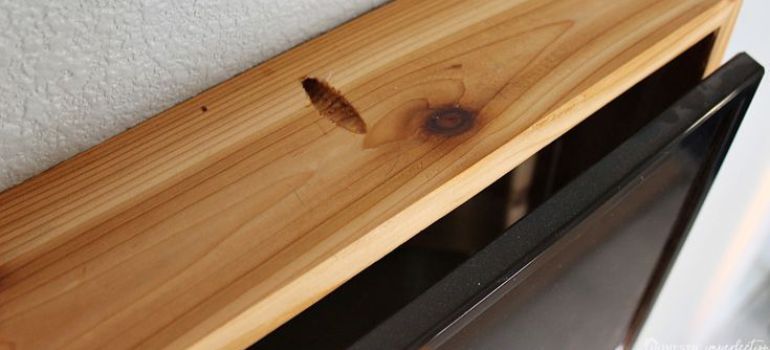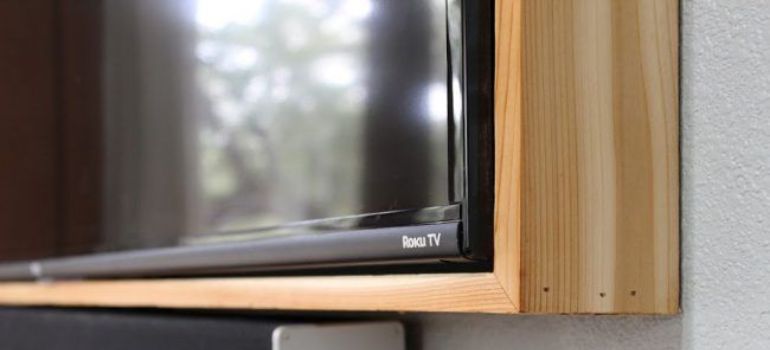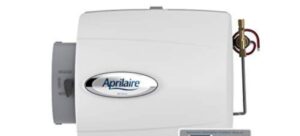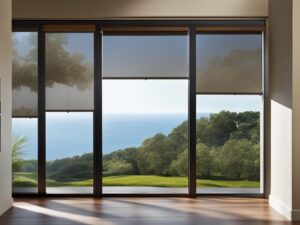Introduction
Mounting a TV on vinyl siding is not only about enhancing your viewing experience but also about doing it safely and aesthetically. In this comprehensive guide, we’ll walk you through the process, ensuring that your TV is securely and beautifully displayed.
Preparation for Mounting
Tools and Materials Needed
To ensure a smooth installation, having the right tools and materials is essential. Here’s what you’ll need:
- Drill: For making holes in the siding and studs.
- Level: To ensure your TV mount is perfectly horizontal.
- Stud Finder: Critical for locating studs behind the vinyl siding.
- Screws and Anchors: Suitable for the type and weight of your TV and mount.
- TV Mount: Chosen based on the size and weight of your TV.
- Measuring Tape: For precise placement and alignment.
- Marker or Pencil: To mark drill points on the siding.
Selecting the Right Mount
Choosing the appropriate mount is critical. Consider:
- Weight Capacity: It must support the weight of your TV.
- Type: Fixed, tilting, or full-motion mounts, depending on your viewing needs.
- VESA Compatibility: Ensure it matches the VESA pattern of your TV.
Assessing Your Vinyl Siding
Before beginning the installation, it’s important to assess the condition of your vinyl siding:
- Check for any damages or weak spots.
- Identify the locations of the studs, as these will provide the support for your TV mount.
- Consider the siding’s exposure to elements, as this might impact the durability of the mount and the TV.
Planning the Location
Decide where you want to mount your TV. Consider:
- Viewing Angle: The ideal location for comfortable viewing.
- Sunlight Exposure: To minimize glare.
- Proximity to Power Outlets: For easy connection to power.
- Height: Typically, the center of the TV should be at eye level when seated.
Safety Precautions
Safety is paramount during this process:
- Ensure all tools are in good working condition.
- Use protective gear like gloves and safety glasses during drilling.
- Double-check the stability of your ladder or stool if you need to work at height.
Understanding Vinyl Siding Characteristics
Vinyl siding is durable but can be sensitive to excessive weight and heat. Ensure that:
- The mount does not damage the siding.
- There is adequate ventilation around the TV to prevent heat buildup.
Step-by-Step Mounting Guide
Step 1: Locate the Studs
- Use a stud finder to locate the studs behind the vinyl siding. This is crucial as the studs will provide the necessary support for the weight of the TV.
- Mark the edges of each stud with a pencil for reference.
Step 2: Positioning the Mount
- Hold the TV mount against the wall and align it with the marked stud locations.
- Use a level to ensure the mount is perfectly horizontal.
- Mark the drill points on the siding through the holes in the mount.
Step 3: Drilling Pilot Holes
- Drill pilot holes at the marked points. Be sure to use a drill bit that is appropriate for the size of the screws you will be using.
- Take care not to apply too much pressure, which could damage the siding.
Step 4: Securing the Mount to the Wall
- Align the mount with the pilot holes.
- Use a drill or screwdriver to secure the mount to the wall with screws. Ensure that the screws are long enough to penetrate through the siding and into the studs.
- Tighten the screws until the mount is firmly attached but avoid over-tightening, which could strip the holes.
Step 5: Attaching the TV to the Mount
- Attach any necessary brackets to the back of your TV as per the mount’s instructions.
- Lift the TV and hook it onto the mount. This step may require assistance, depending on the size and weight of your TV.
- Secure the TV to the mount according to the manufacturer’s instructions.
Step 6: Cable Management
- Arrange and secure the TV cables. Use cable clips or conduits to keep cables organized and prevent them from hanging loosely.
- If desired, you can run cables through the wall for a cleaner look, but ensure this is done safely and in accordance with local building codes.
Step 7: Final Checks
- Double-check all connections and mountings to ensure everything is secure.
- Adjust the TV angle and position as needed for optimal viewing.
- Turn on the TV to test that everything is working correctly.
Important Considerations:
- Safety First: If you are not confident in your ability to safely mount the TV, it is advisable to seek professional assistance.
- Weather Exposure: If the TV is mounted in an area exposed to the elements, make sure both the TV and the mount are suitable for outdoor use.
- Regular Maintenance: Periodically check the mount to ensure it remains secure and tighten any loose screws.
Tips for a Successful Installation

1. Understand Your Siding
- Know Your Material: Different types of vinyl siding have varying degrees of strength and flexibility. Understand the specifications of your siding to avoid damage during installation.
- Inspect for Damage: Ensure the siding where you plan to mount the TV is in good condition, free of cracks or warping.
2. Choose the Right Tools
- Quality Over Quantity: Invest in good-quality tools. A reliable stud finder, a sturdy drill, and precise measuring tools can make a significant difference.
- Appropriate Hardware: Use screws and anchors that are designed for both the weight of your TV and the characteristics of vinyl siding.
3. Prioritize Safety
- Stud Support: Always mount into the studs, not just the siding, to ensure the mount can support the weight of the TV.
- Safety Gear: Use safety glasses and gloves, especially when drilling or cutting.
4. Precision in Measurement
- Measure Twice, Drill Once: Accurate measurements are key. Double-check all measurements before drilling any holes.
- Leveling: A level is essential to ensure your TV is not tilted or skewed.
5. Consider the Viewing Experience
- Optimal Height and Angle: The center of the TV should generally be at eye level when seated. Consider adjustable mounts for the best viewing angle.
- Avoid Glare: Be mindful of windows and lighting that might cause screen glare.
6. Cable Management
- Plan for Cables: Think about how you’ll manage power and connection cables. Concealing cables can drastically improve the aesthetic of your installation.
- Outdoor Considerations: If the TV is outdoors, ensure all cables and connections are weatherproof.
7. Weather Considerations
- Protection from Elements: If the TV is outdoors or in a semi-outdoor area, ensure it’s protected from weather extremes. Use mounts and covers designed for outdoor use.
- Ventilation: Ensure there is enough air circulation around the TV to prevent overheating.
8. Final Inspection
- Check All Connections: Once the TV is mounted, double-check all screws and brackets to ensure everything is tight and secure.
- Test the Setup: Test the TV for stability and view a program to check the positioning and cable connections.
9. Plan for Future Adjustments
- Accessibility: Ensure you can easily access the TV for future adjustments or maintenance.
- Flexibility: If there’s a chance you’ll want to reposition the TV later, consider a mount that allows for easy adjustments.
10. When in Doubt, Consult a Professional
- Expert Advice: If you’re unsure about any part of the process, it’s wise to consult a professional. This is especially important for larger TVs or complex mounting scenarios.
Maintenance and Care
Regular Check-ups
Periodically check the mount and screws for any looseness.
Cleaning and Adjusting
Keep the area clean and free from dust. Adjust the position of your TV as needed for optimal viewing.
Ensuring a Neat Appearance
Managing Cables and Wires
Concealing cables is key to a clean look. Consider using cable concealers or running them through the wall.
Aligning with Home Decor
Choose a mount and setup that complements your room’s aesthetic. The right placement can enhance the overall look of your space.
Troubleshooting Common Issues
Adjusting for Viewing Comfort
If you experience glare or discomfort, adjust the angle of the TV. Some mounts offer tilting or swiveling features for this purpose.
Dealing with Siding Damage
In case of accidental damage to the siding, consult a professional for repair. Avoid DIY fixes that might worsen the situation.
Advanced Mounting Options
Mounting on Insulated Vinyl Siding
If your siding is insulated, special care is needed. Use spacers to avoid compressing the insulation, which could lead to heat loss.
Using Mounting Brackets
For extra support, consider using mounting brackets that distribute the weight more evenly across the siding.
Legal and Safety Considerations
Checking Local Building Codes
Before starting your project, check if there are any local regulations or permits required for such installations.
Importance of Professional Help
If in doubt, always opt for professional installation. This ensures safety and compliance with any local codes.
Conclusion
Mounting your TV on vinyl siding can be a fulfilling project, adding both function and style to your home. With the right tools, preparation, and care, you can enjoy your favorite shows and movies in a comfortable, safe, and visually pleasing setting.
FAQs
Yes, as long as the studs can support the weight and the proper mount is used.
Yes, but ensure the TV and mount are suitable for outdoor conditions.
Regularly inspect and clean the siding, and check for any signs of wear or damage.
You can fill and paint over the holes, but consider consulting a professional for siding repair.
While there are no specific mounts for vinyl siding, ensure the mount you choose can be securely fixed to the studs.



